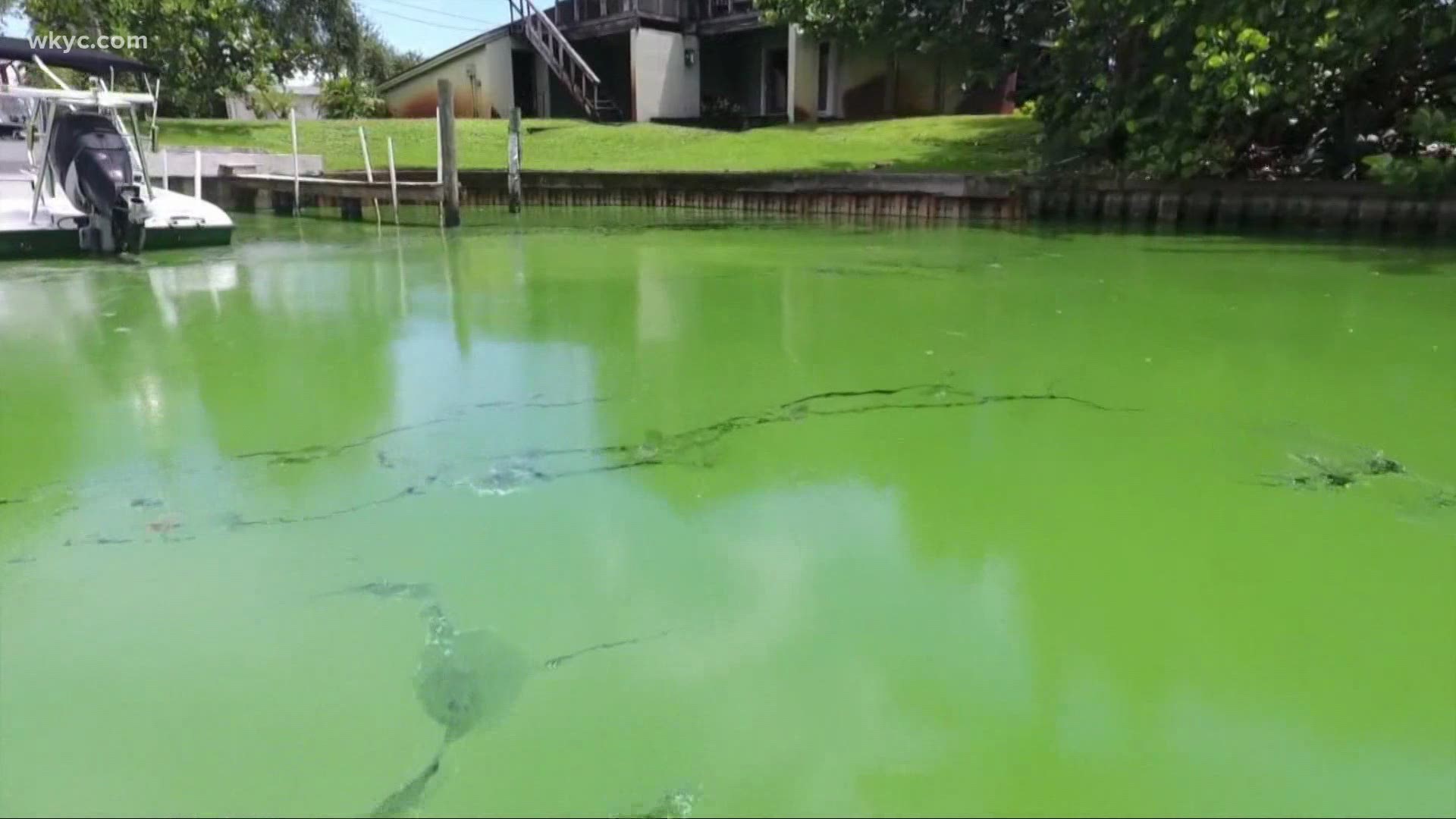CLEVELAND — It’s time to recommit to efforts to reduce farm runoff that cause algal blooms, the Great Lakes Business Network said on Tuesday.
The group, which includes 170 businesses and leaders from Ohio, Michigan and Ontario who profess their support for a cleaner lake, released a report offering recommendations in attempts to reduce runoff. The report also offered a picture of the lake’s impact on local economies and losses created by algal blooms.
“Michigan’s watershed wildlife and recreation creates over 55,000 jobs and adds more than $2.4 billion for the regional economy,” Jimmy Bannish, chief operating officer of Michigan’s toy company, The Bear Factory.
A 2011 algal bloom cost Toledo $71 million in economic losses, according to the report.
The most infamous algal bloom – sometimes referred to as Lake Erie’s Green Monster -- appeared in 2014 and threatened the drinking water. The western bloom forced officials to issue a “do not drink” advisory that for three days, which affected more than 400,000 people.
It got the attention of leaders in Ohio, Michigan and Ontario, who agreed to new priorities to help reduce fertilizer runoff 40% by 2025, a threshold believed to prevent future large outbreaks.
But efforts are falling short, the Great Lakes Business Network said.
“The reality is we are not on track to meet the 40 percent reduction goals set by governors and premiers,” said Darryl MacMillan of Pelee Island Winery in Ontario. “We need our voices to be heard.”
MacMillan and other network members are recommending lawmakers and groups focus on educating farmers about runoff, setting up new metrics, and holding farmers accountable for excessive runoff.
Some in the farming industry have pushed back against earlier efforts, arguing monitoring and alternative fertilizing techniques are far too costly -- and unnecessary.
The coalition says it recognizes the concerns, but needs to get them on board.
"I don’t’ think this a farmers against business and recreation situation,” said Abrey Miller, founder of Redbudssuds, a shampoo and soap maker in Canton. “We want to support farmers to implement best practices and help them connect the dots to believe what’s happing in the field is happening in the water.”
Here is the Great Lakes Business Network's summary of their report.
The Great Lakes Business Network (GLBN) released a first-of-its-kind report today addressing Lake Erie algal blooms and proposed recommendations for remediation in Ohio, Michigan and Ontario.
The Great Lakes Business Network report is being released ahead of the Harmful Algal Blooms forecast for Lake Erie.
Algal blooms form as a green, slimy substance in the lake and are caused by nutrient run-off, with the most problematic contributions coming from fertilizer applications and other waste from agri-businesses that fail to properly control runoff or follow best practices.
Failure to control a critical contributor to harmful algal blooms passes the expense from the businesses which produce nutrient pollution to the businesses harmed by it. Tourism, fishing, and outdoor recreation industries, as well as water treatment facilities, face increased operating costs, lost revenue, and decreased value.
Some highlights from the report include:
- Ohio: The 2011 harmful algal bloom cost Ohio $71 million in economic losses, which could happen again without reducing the nutrients that produce blooms.
- Michigan: In Michigan’s Lake Erie watershed, wildlife recreation creates over 55,000 jobs and adds more than $2.4 billion to the regional economy. Harmful algal blooms put those jobs and economic activity at risk.
- Ontario: Without reducing the nutrients that produce harmful algal blooms, it is estimated that harmful algal blooms could cost Ontario $272 million over the next 30 years, including a $110 million hit to the tourism industry.
Policy recommendations include:
Ohio:
- Support the Maumee Watershed Nutrient Total Maximum Daily Load project to document all local nutrient sources and establish nutrient reduction plans that meet established targets.
- Support H2Ohio funding and accountability, including projects to implement agricultural best management practices that include field to stream monitoring to better connect field practices with water quality outcomes.
- Support initiatives that ensure manure is applied only to fields with low soil test levels of phosphorus.
Michigan:
- Collaborate with Ohio in the development of the Maumee Watershed Nutrient Total Maximum Daily Load project for the Michigan portion of the Maumee River Basin to quantify local nutrient sources and establish nutrient reduction plans that meet established targets.
- Support strengthening of the Michigan Agricultural Environmental Assessment Program (MAEAP) with improvements that link practices on the field to water quality outcomes.
- Ensure that the state is doing all it can to stop animal waste from polluting Michigan waters including banning all manure application on frozen, snow covered or saturated ground.
Ontario:
- Develop and release the long-overdue workplan that spells out how the Canada-Ontario Action Plan for Lake Erie will meet the 40% reduction target for harmful algal blooms.
- Invest in financial and educational programs that assist Ontario farmers with implementing agricultural best management practices that mitigate nutrient losses and track, monitor and report progress.
More Headlines:

